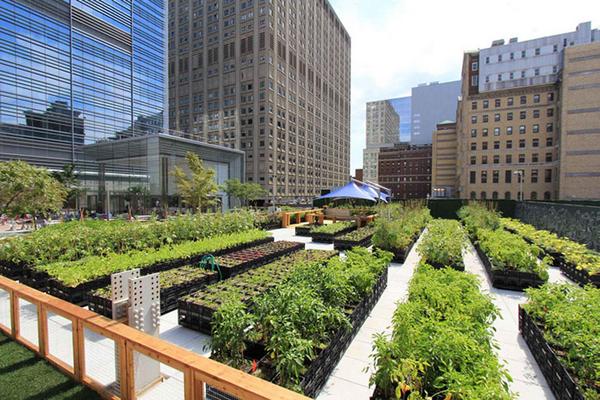The Main Principles Of City Blooming
The Main Principles Of City Blooming
Blog Article
4 Simple Techniques For City Blooming
Table of ContentsThe Definitive Guide for City BloomingGet This Report on City BloomingOur City Blooming Ideas10 Easy Facts About City Blooming ShownAll About City Blooming
Fascinated in expanding food for sale in the City of Chicago? Below is a checklist of often asked concerns pertaining to the policies and guidelines that cultivators should consider when preparing an urban farming project.
The zoning change does not customize any type of other codes managing composting, building permits, buying or renting City owned property, organization licenses or environmental contamination. There are existing codes that regulate these problems and they remain in complete impact and might be appropriate to your project. Neighborhood gardens are typically had or managed by public entities, public organizations or community-based companies and maintained by volunteers.
Urban ranches expand food that is planned to be marketed, either on a not-for-profit or for-profit basis. Due to their commercial purpose, metropolitan farms call for a business license.
City Blooming for Dummies
Composting is permitted yet just for plant material that is created and made use of on site. The amount of compost material can not go beyond 25 cubic backyards at any type of given time according to the criteria in 7-28-715 of the City's Municipal Code. Yes. Because the dirt at a lot of new garden websites needs modifying, garden compost, soil, wood chips, or other products can be acquired to construct or enhance the growing room - sustainability.

If a building permit is called for after that the hoophouse will certainly be taken into consideration an accessory structure. You can figure out more about the structure authorization demands by speaking to the Division of Buildings. The 25,000-square-foot size limitation is meant to avoid a single neighborhood yard from controling an offered block or diminishing the block's existing residential or business personality.
The limitation does not use to gardens found in Public Open Space (POS) areas. Can there be greater than one area yard that is 25,000 square feet on a solitary block? Yes. The size limit relates to individual yards, not to private blocks. No. Fencing is not needed, nevertheless, yards that have large car park areas might be needed to set up fencing or various other landscaping attributes.
City Blooming Can Be Fun For Anyone
B1 & B2 districts call for that all commercial usage tasks be performed inside. Is fence required for city ranches? Fences may be called for, along with landscape design and screening, for particular parking locations and outside work or storage space areas depending on area and the specific task taking location.
Urban ranches call for building permits and zoning authorizations prior to construction (City gardening). Various other kinds of city evaluation may be required depending on details frameworks, tasks, size, landscape design, licensing, public heath and stormwater administration concerns.
Yes. The type of certificate is determined by what is taking place at the website. The Department of Business Matters and Consumer Protection can assist establish the certain type of organization permit that's called for. Yes. Off street car parking is needed for a lot of industrial projects in Chicago. The needed number of car parking rooms is based on the variety of staff members working on website and not the square video of the growing room.
Not known Incorrect Statements About City Blooming

A metropolitan ranch can market compost product created on website, however, the procedure has to comply with the regulations in 7-28-715 of the Chicago Municipal Code. Aquaponic systems are permitted indoors on city ranches in several zoning areas.
Up to five hives or colonies of honey bees may be maintained as an accessory usage. However, beekeepers should register with the Illinois Division of Agriculture. To find out more about the recommended zoning change you might get in touch with the Department of Real Estate and Economic Development, Bureau of Preparation and Zoning at 312.744.8563.
Farming in cities and urban areas A metropolitan farm in Chicago. Urban farming refers to different methods of growing. https://www.mixcloud.com/cityblooming/, handling, and dispersing food in urban areas. The term likewise puts on the area tasks of animal husbandry, tank farming, beekeeping, and horticulture in a metropolitan context. Urban agriculture is identified from peri-urban farming, which happens in backwoods beside residential areas.
What Does City Blooming Do?
, who seek to develop social networks started on a shared values of nature and neighborhood holism. These networks can create by method of formal institutional support, ending up being integrated into neighborhood community planning as a "transition town" activity for lasting city development.
The more straight accessibility to fresh veggie, fruit, and meat products that might be understood via metropolitan farming can improve food security and food security while lowering food miles, leading to lower greenhouse gas discharges, therefore adding to environment change mitigation. A few go to website of the initial evidence of urban agriculture originates from Mesopotamia.
Report this page